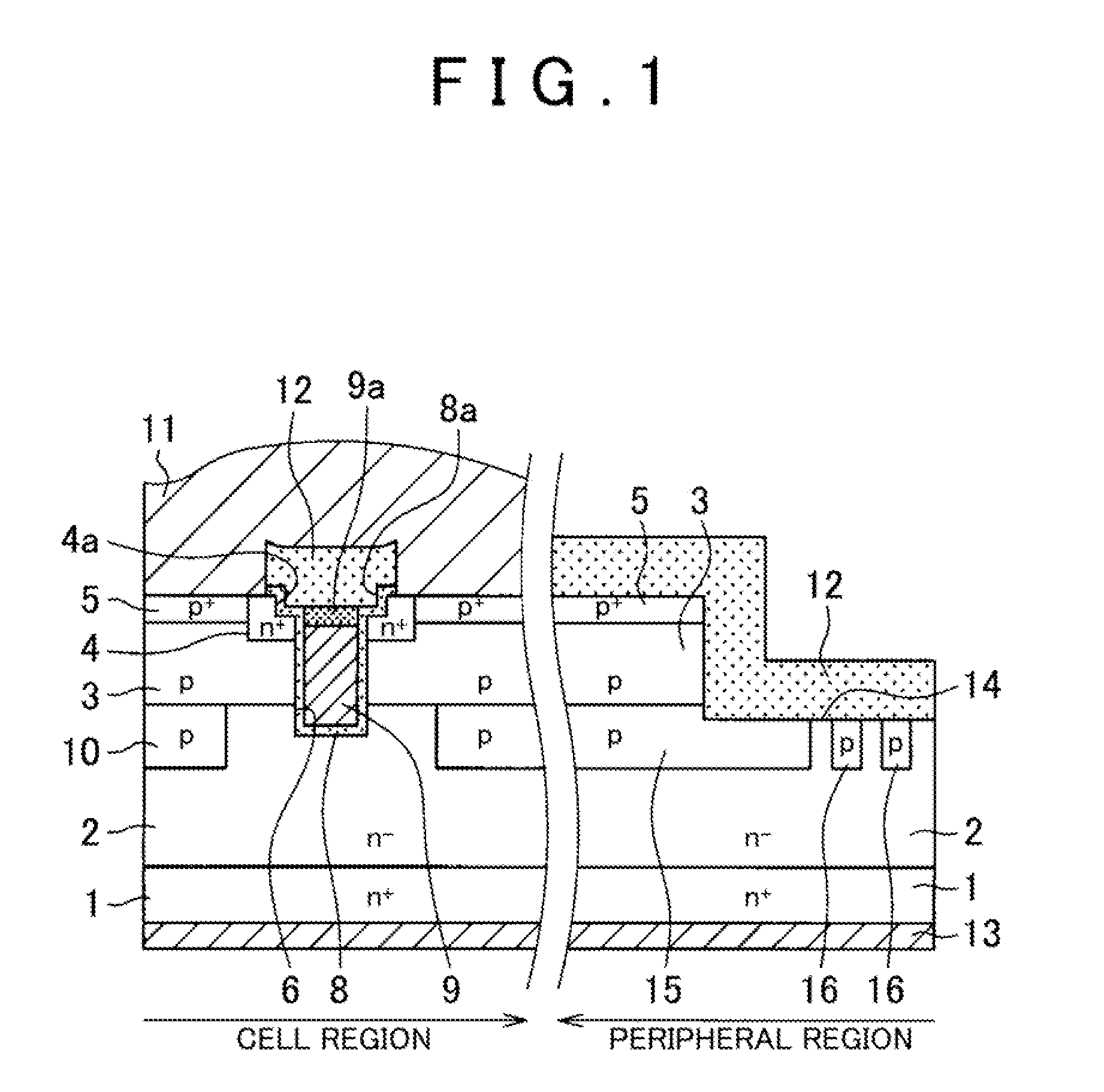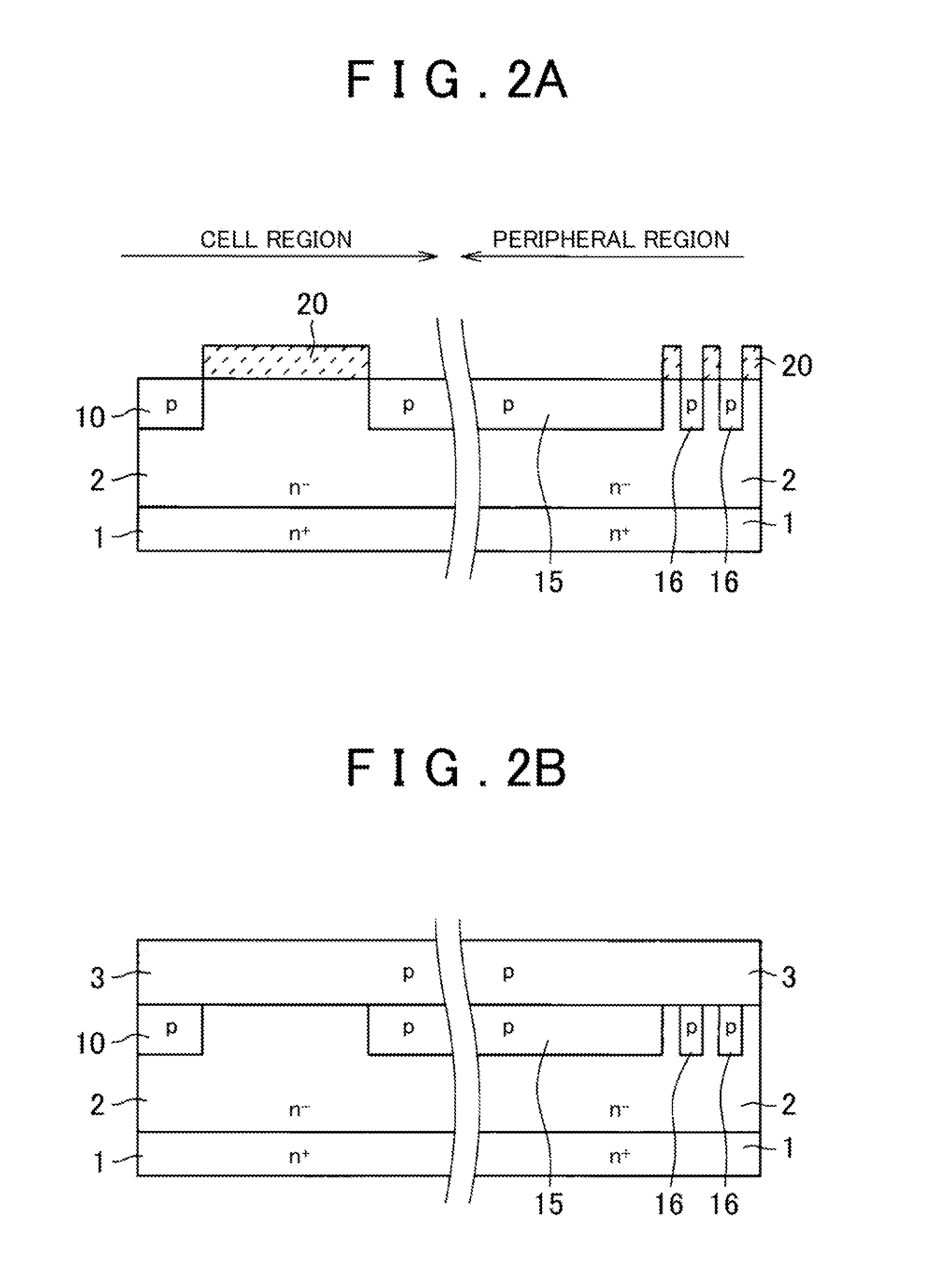Silicon carbide semiconductor device and method for manufacturing the silicon carbide semiconductor device
a semiconductor device and silicon carbide technology, applied in the direction of semiconductor devices, electrical devices, transistors, etc., can solve the problems of narrow process margin, insufficient breakdown voltage, and reduced adhesion between the source electrode and the bonding wire, so as to simplify the manufacturing process and increase the process margin
- Summary
- Abstract
- Description
- Claims
- Application Information
AI Technical Summary
Benefits of technology
Problems solved by technology
Method used
Image
Examples
first embodiment
[0042]A first embodiment of the invention will be described. A SiC semiconductor device according to the first embodiment includes a cell region having a MOSFET and a peripheral region having a peripheral high-breakdown-voltage structure surrounding the cell region as shown in FIG. 1.
[0043]The SiC semiconductor device includes an n+-type SiC semiconductor substrate 1 having a principal surface of a Si-plane (i.e., the direction perpendicular to the substrate is the direction of plane [0001]), a concentration of an n-type impurity, such as nitrogen, of, for example, 1.0×1019 / cm3, and a thickness of about 300 μm. An n−-type SiC drift layer 2 having a concentration of an n-type impurity, such as nitrogen, of, for example, 3.0×1015 to 10.0×1015 / cm3 and a thickness of about 5 to 15 μm is formed on the surface of the n+-type substrate 1. Although the impurity concentration of the n−-type drift layer 2 can be constant in the depth direction, the concentration is preferably gradually varied...
second embodiment
[0084]A second embodiment of the invention will now be described. In the second embodiment, the structure of the gate electrode 9 is modified from that in the first embodiment, and the other parts are similar to those in the first embodiment. Only the differences from the first embodiment will be described.
[0085]With reference to FIG. 5, in the embodiment, the surface of the cap layer 9a of the gate electrode 9 is flush with the surface of the gate oxide film 8 (the upper surface of the extension 8a). A SiC semiconductor device having such a structure is manufactured as follows:
[0086]After the processes as shown in FIGS. 2A to 2D and FIGS. 3A to 3D described in the first embodiment, the processes as shown in FIGS. 6A to 6D are performed.
[0087]Specifically, in the step shown in FIG. 6A, a process similar to the step shown in FIG. 4A is performed such that the surface of the gate electrode 9 is etched back so as to be flush with the surface of the gate oxide film 8. For example, in th...
PUM
 Login to View More
Login to View More Abstract
Description
Claims
Application Information
 Login to View More
Login to View More - R&D
- Intellectual Property
- Life Sciences
- Materials
- Tech Scout
- Unparalleled Data Quality
- Higher Quality Content
- 60% Fewer Hallucinations
Browse by: Latest US Patents, China's latest patents, Technical Efficacy Thesaurus, Application Domain, Technology Topic, Popular Technical Reports.
© 2025 PatSnap. All rights reserved.Legal|Privacy policy|Modern Slavery Act Transparency Statement|Sitemap|About US| Contact US: help@patsnap.com



